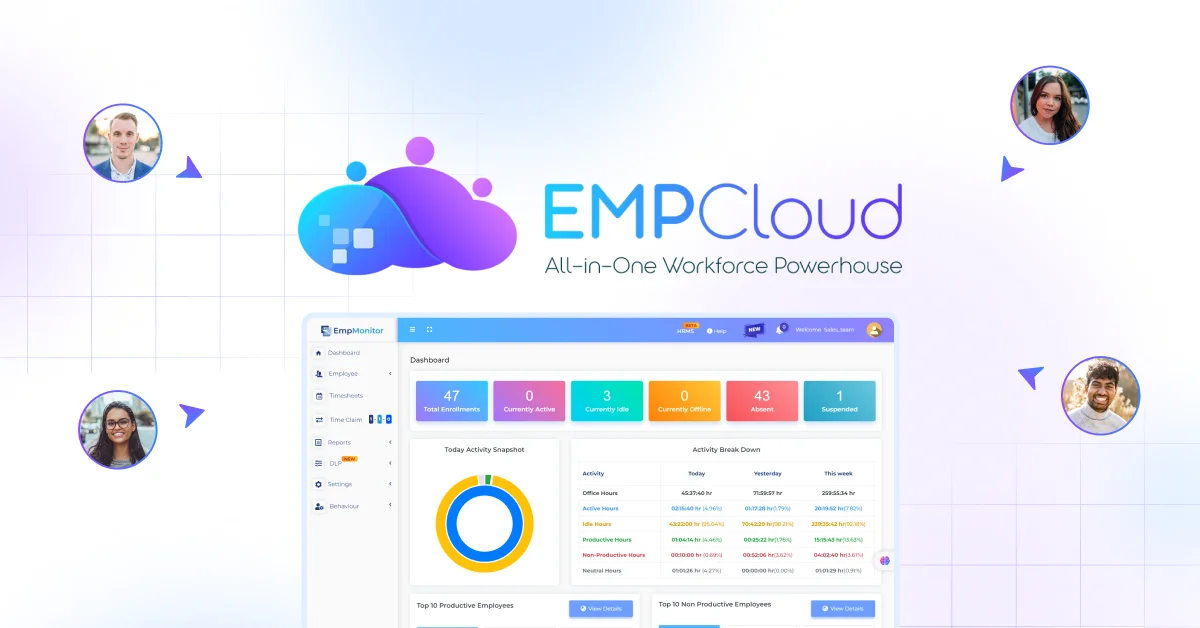
Imagine that you are the CEO of a startup. You have just secured funding to launch a new product, but the timeline is aggressive. You need seasoned experts who can hit the ground running and deliver results without the lengthy hiring process or the overhead of full-time employees. This is where the contingent workforce comes into play.
This is not a hypothetical scenario; it occurs daily in businesses worldwide.
The contingent workforce is fundamentally changing how we work, because it provides companies with the agility and specialized expertise they need to compete in evolving markets.
However, what does this shift mean for your organization, and why should contingent talent be central to your workforce strategy?
Listen to the audio version here.
What Is A Contingent Workforce?

A contingent workforce refers to workers on a temporary or non-permanent basis. These workers can be freelancers, contractors, consultants, or temporary employees. They fulfill specific needs, whether for a short-term project, a seasonal uptick in demand, or specialized skills that the regular workforce may not possess.
The contingent workforce is rooted in flexibility. Unlike full-time employees, contingent workers meet a short-term need or fill a specialized gap. This model allows businesses to scale up or down easily, depending on project demands or industry changes.
In fact, according to a recent report from McKinsey & Company, over 40% of the global workforce is expected to be contingent by 2030. This trend reflects a fundamental shift in how businesses approach staffing, leading to greater operational flexibility and cost efficiency.
Why Businesses Are Turning To Contingent Workforce Solutions?
The trend towards using contingent workers is more than just a fad. It’s becoming a fundamental shift in how businesses operate, particularly as they look for ways to stay competitive and reduce overhead costs. Let’s dive into why contingent workforce solutions are gaining popularity:
Cost Savings
Full-time employees come with a significant price tag—salaries, benefits, and long-term commitments. Contingent workforce management offers a more cost-effective alternative. You only pay for the work, long-term salary, or benefits obligations.
For example, a startup might need an experienced marketing consultant to launch a new product. Hiring a full-time marketer could mean paying for a long-term salary, even after the launch. Instead, they can bring in a contingent worker who is only paid for the work, saving money on benefits.
Contingent Workforce Solutions has to reduce overall operational costs. A 2019 report from PwC revealed that businesses using contingent workers for specialized projects saw a 25% reduction in staffing costs compared to those using full-time employees for similar roles.
Access to Specialized Skills
Not every project requires a permanent employee. Sometimes, businesses need specific skills for a limited time. Whether IT specialists, marketing consultants, or design experts, contingent workers bring specialized expertise that may not be available in-house.
For instance, a software company may need a cybersecurity expert for a limited time to address specific vulnerabilities before a product launch, without the need for the company to make a long-term commitment.
Businesses stay on top of industry trends. By hiring contingent workers with niche skills, companies can ensure they have the right expertise without the overhead cost of hiring full-time staff for positions that may not be in the future.
Flexibility and Scalability
The needs of a business are rarely static. Whether dealing with seasonal demand, fluctuating project requirements, or unexpected market changes, the ability to scale your workforce quickly and efficiently is crucial. Contingent workforce management solutions offer that flexibility, allowing businesses to adjust their workforce based on real-time needs.
Think about a retail company that experiences a surge in demand during the holiday season. Hiring additional full-time staff may not make sense, but employing a contingent workforce to hire temporary workers meets the increased demand without a long-term financial commitment.
A recent survey from Forbes revealed that 65% of businesses saw an improvement in operational agility after implementing contingent workforce strategies. Understanding the contingent workforce’s meaning helps companies realize how utilizing contingent workers allows them to scale operations up and down based on seasonal or market conditions, without long-term commitments.
Faster Time-to-Market
The contingent workforce can often jump into a project, contributing from day one. It helps reduce delays and accelerates the delivery of new products or services, a crucial factor for startups or companies with aggressive growth targets.
For instance, a tech startup launching a new app might need additional developers to meet deadlines. By hiring contingent workers, they can onboard professional growth with the right skills immediately, ensuring faster project delivery and a timely market launch.
Additionally, contingent workers are typically well-versed in working independently, meaning they need less onboarding time. It allows businesses to ramp up projects quickly, get them into production faster, and gain a competitive edge in the market.
Recommended article
How To Master IOC Cybersecurity For Stronger Threat Defense?
How To Manage Your Contingent Workforce?
As contingent workers become a larger part of the workforce, understanding what contingent workforce management is becomes crucial. Managing a temporary workforce involves different processes compared to managing full-time employees, and businesses must be prepared to handle these differences. Here are some tips for managing contingent workers effectively:
Clear Communication
Since contingent workers are typically not in the office full-time, it’s essential to establish strong communication channels. Regular check-ins, clear expectations, and collaborative tools can help ensure everyone stays on the same page. Tools like Slack, Microsoft Teams, or Zoom can facilitate easy communication and keep teams connected despite geographical distances.
Having a structured communication plan in place ensures that contingent workers feel part of the team, even if they’re working remotely. Regular touchpoints help avoid misunderstandings and keep projects on track.
Use Technology to Streamline
Managing a contingent workforce can be complex, especially when dealing with multiple contractors or freelancers. Invest in workforce management software to keep track of projects, deadlines, and payments. It will help ensure a smooth workflow and prevent errors.
Platforms like EmpCloud can provide seamless project tracking and time management. These tools allow you to monitor progress, assign tasks, and ensure that contingent workers stay on track while reducing the risk of miscommunication.
For example, EmpCloud’s time-tracking capabilities help ensure contractors remove any ambiguity or discrepancies. It helps businesses streamline operations while maintaining high control and transparency.
Set Clear Expectations
When bringing a contingent worker on board, make sure to outline the scope of the project, deliverables, and timelines. It helps avoid misunderstandings and ensures that both parties from the start.
A well-documented contract or agreement is essential to clarify the terms of engagement, including expectations on work hours, deliverables, and payment terms. It ensures that the business and the contingent worker understand what is required for success.
Integrate with Your Core Team
Contingent workers should feel part of the team, even if their time with the company is temporary. Fostering an inclusive work environment as part of effective contingent workforce management can lead to better collaboration and higher-quality outcomes. Invite contingent workers to meetings, brainstorming sessions, and company events to build rapport and enhance team dynamics.
When contingent workers are treated as an integral part of the team, they’re more likely to go above and beyond, ensuring that projects are completed with the highest level of quality.
The Role Of Contingent Workforce Management Solutions
Managing a contingent workforce requires the right tools. It is where contingent workforce management solutions come into play. These tools provide businesses with the infrastructure to manage the entire lifecycle of contingent workers, from recruitment to payment.
By automating tasks like time tracking, contract management, and billing, workforce management software ensures the process is efficient, accurate, and scalable. Additionally, these solutions can help companies maintain compliance with labor laws, especially when working with international workers.
Before diving into deep, let me introduce you a EmpCloud.
EmpCloud is a platform designed to help businesses manage their contingent workers. It simplifies tasks like tracking work hours, handling payroll, and ensuring compliance with labor laws. The platform also offers tools for reporting and analytics to help businesses optimize their workforce management. EmpCloud makes it easier for companies to efficiently manage temporary or contract workers, without getting bogged down in administrative tasks.
EmpCloud offers a comprehensive platform that helps businesses manage their contingent workforce efficiently. The platform allows you to track time, handle payroll, and ensure that your contingent workers are paid accurately and on time. It also provides powerful analytics that can help you optimize your workforce management strategy. By leveraging EmpCloud’s solutions, businesses can focus on what matters—growing their brand and achieving their goals—without worrying about the complexities of workforce management.
EmpCloud offers features such as:
- Time and Attendance Tracking: Easily track hours worked by contingent workers, ensuring accurate billing and payroll.
- Compliance Management: Keep track of labor regulations and ensure your contingent workers comply with legal requirements.
- Payroll Automation: EmpCloud automates the payroll process, reducing errors and administrative overhead.
- Reporting and Analytics: Gain insights into your contingent workforce’s performance, helping you optimize your staffing strategy.
EmpCloud, businesses can streamline the entire process of managing contingent workers, reducing complexity and focusing more on their core operations.
What Next For The Contingent Workforce?
As businesses adopt flexible work models, the use of contingent workers grows. Companies have found that the traditional way of hiring full-time employees doesn’t always work for every situation. Whether for short-term projects, special skills, or the ability to scale up quickly, contingent workers are a key part of many teams.
For entrepreneurs, small business owners, and corporate professionals, using contingent workers can help them stay flexible, competitive, and quick without sacrificing quality. This approach lets businesses adjust to changes in demand without long-term commitments.
Using the right tools, like EmpCloud, makes managing contingent workers easier and more efficient. With the right software, businesses can handle time tracking, payroll, and compliance more smoothly, while saving time and effort.
As contingent workers become a bigger part of the workforce, businesses that adapt to this change will be better at managing costs, finding specialized talent, and staying flexible.
Conclusion
The rise of the contingent workforce is reshaping how businesses operate, offering flexibility, cost savings, and access to specialized talent without the long-term commitments of traditional employment. Companies that embrace this workforce model can scale quickly, meet project demands efficiently, and stay competitive in an evolving market.
However, managing a contingent workforce requires a strategic approach. Clear communication, proper onboarding, and the right workforce management solutions are essential for success. Platforms like EmpCloud simplify the process by simplifying project tracking, payroll, compliance, and performance management, ensuring businesses can effectively manage their contingent workers.
In the workplace, businesses that adapt to this new workforce model will unlock greater agility, reduce overhead costs, and drive innovation. Whether you’re a startup, a growing enterprise, or an established corporation, leveraging a contingent workforce can be a game-changer in achieving your business goals.
Frequently Asked Questions (FAQ)
How do businesses ensure the quality of work from contingent workers?
Businesses can ensure quality by setting clear expectations, providing detailed project briefs, conducting regular check-ins, and using performance-tracking tools. Workforce management software like EmpCloud can help monitor productivity reports and ensure accountability.
What are the legal considerations when hiring a contingent workforce?
Companies must comply with labor laws, tax regulations, and contractual obligations when hiring contingent workers. Misclassification of workers (as independent contractors instead of employees) can lead to legal and financial penalties. Consulting with a legal expert can help businesses navigate compliance challenges.
Can a contingent workforce be integrated into company culture?
Although contingent workers are temporary, they can still be in meetings, team discussions, and company events. Businesses that foster a sense of belonging see better collaboration and higher engagement from contingent workers.
How can businesses build long-term relationships with contingent workers?
Businesses can nurture relationships with top-performing contingent workers by offering repeat contracts, providing positive feedback, and keeping open communication for future opportunities. Maintaining a network of trusted freelancers and contractors can streamline future hiring.
What’s the best way to onboard a contingent worker efficiently?
Onboarding should include a clear project brief, role expectations, access to necessary tools, and an introduction to key team members. Using workforce management software can streamline this process and ensure smooth collaboration.
What are the risks of relying too much on a contingent workforce?
While a contingent workforce offers flexibility, over-reliance can lead to inconsistent work quality, a lack of long-term commitment, and potential compliance risks. Businesses should balance their staffing strategy by ensuring a core team of full-time employees while leveraging contingent workers for specialized or short-term needs.







